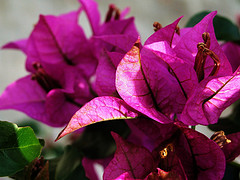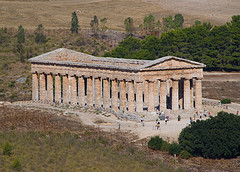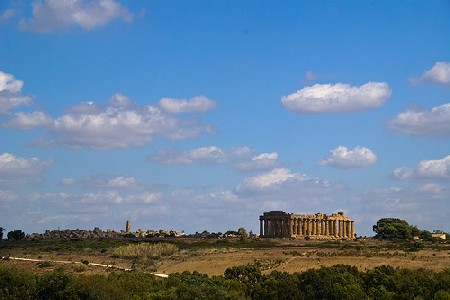 Sicily is the largest island of Italy.
Sicily is the largest island of Italy.
The Aeolian, the Egadi the Pelagie islands and Pantelleria and Ustica are part of the Sicilian territory.
In Sicily Etna, the highest active volcano in Europe, dominates the plain of Catania.
On Sicily they have succeeded over the centuries Phoenicians, Greeks, Romans, Byzantines, Arabs and Normans who left substantial evidence, including the Valley of the Temples in Agrigento, or the splendid mosaics of Monreale Cathedral or the Necropolis of Pantalica.
One of the most popular tourist resort is Taormina, but along the coast, there are many other wonderful places like Acitrezza, Aci Castello and Aci Catena. A visit is also due to Alcantara and Giardini Naxos.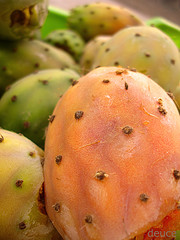
Organizing or selecting itineraries in Sicily means first of all considering various options offered on the island, from the archaeological and historical resorts to the seaside ones.
In Sicily talking about food means “to begin a journey into the trip”. The Sicilian kitchen is full of fragrant products, flavours that are a delightful balance between land and sea. A food culture inscribed in the Mediterranean tradition.
In Sicily the variety of dishes is full of products, spices and perfumes that bear witness to what the island has gone through for centuries with the influence of several dominators. They have left many monuments and ruins in memory of their past glory and a past so rich that he could not leave behind a wide range of diverse gastronomy traditions.
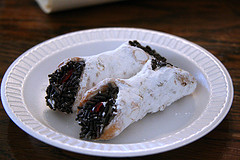 It ‘s not possible to talk about Sicilian cuisine as a whole: the differences arising from different cultural influences cross with those determined by the difference between the cuisine of the coast and of the inland.
It ‘s not possible to talk about Sicilian cuisine as a whole: the differences arising from different cultural influences cross with those determined by the difference between the cuisine of the coast and of the inland.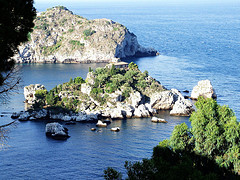
As in all the poor kitchens the habit of a single plate is common. An example is the different types of pasta: it can be cooked in in different ways and enriched by the products of the place so to replece the entire meal. It is the case of the pasta with sardines, a dish born in Palermo and then spread everywhere on the island. Or the pasta with vegetables in the hinterland. Very famous is the pasta alla Norma (with tomatoes, eggplant and salted ricotta).
A special place is also given to bread. In Sicily there are many types of bread always enriched with what the area has to offer such as olive oil, oregano and tomato for the most popular bread cunsato (seasoned), to be consumed hot; freshly made bread at the unusual ca’ meusa; toasted with spleen sold on stalls in the streets of Palermo.
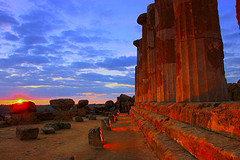 Familiarity with natural products and a simplicity are even nowadays what most characterizes the cuisine of the eastern part of the island, birthplace of the Magna Grecia. It is easy to see similarities to the kitchen of the hinterland, characterized by the use of greens and vegetables. The eggplant is a good example. A lot of appetizing dishes are made with it till reaching its glorification in the Parmigiana.
Familiarity with natural products and a simplicity are even nowadays what most characterizes the cuisine of the eastern part of the island, birthplace of the Magna Grecia. It is easy to see similarities to the kitchen of the hinterland, characterized by the use of greens and vegetables. The eggplant is a good example. A lot of appetizing dishes are made with it till reaching its glorification in the Parmigiana.
Dairy products have an important role, while the consumption of meat is often reserved for the festivities. The most common preparation is grilled and pork or mutton are used mainly.
Returning to the historical influences, the Arabs introduced citrus fruits, sugar, cinnamon and saffron, as well as rice. Especially rice has developed many different dishes like arancine (stuffed with ragout of meat and peas or ham and cheese), a sort of emblem of Sicilian cuisine.
Fish is of course proposed with a wealth of preparation and variety. Among them a special place is given to tuna, but everywhere there are sardines and anchovies, while swordfish is more traditional in Messina.
Special attention deserves the Sicilian pastry that is part of the daily routine. Its scent is in the air like that of plants (rosemary, wild fennel, oregano, nipitella) that one can encounter along the journey.
For information on accommodations, click here.
